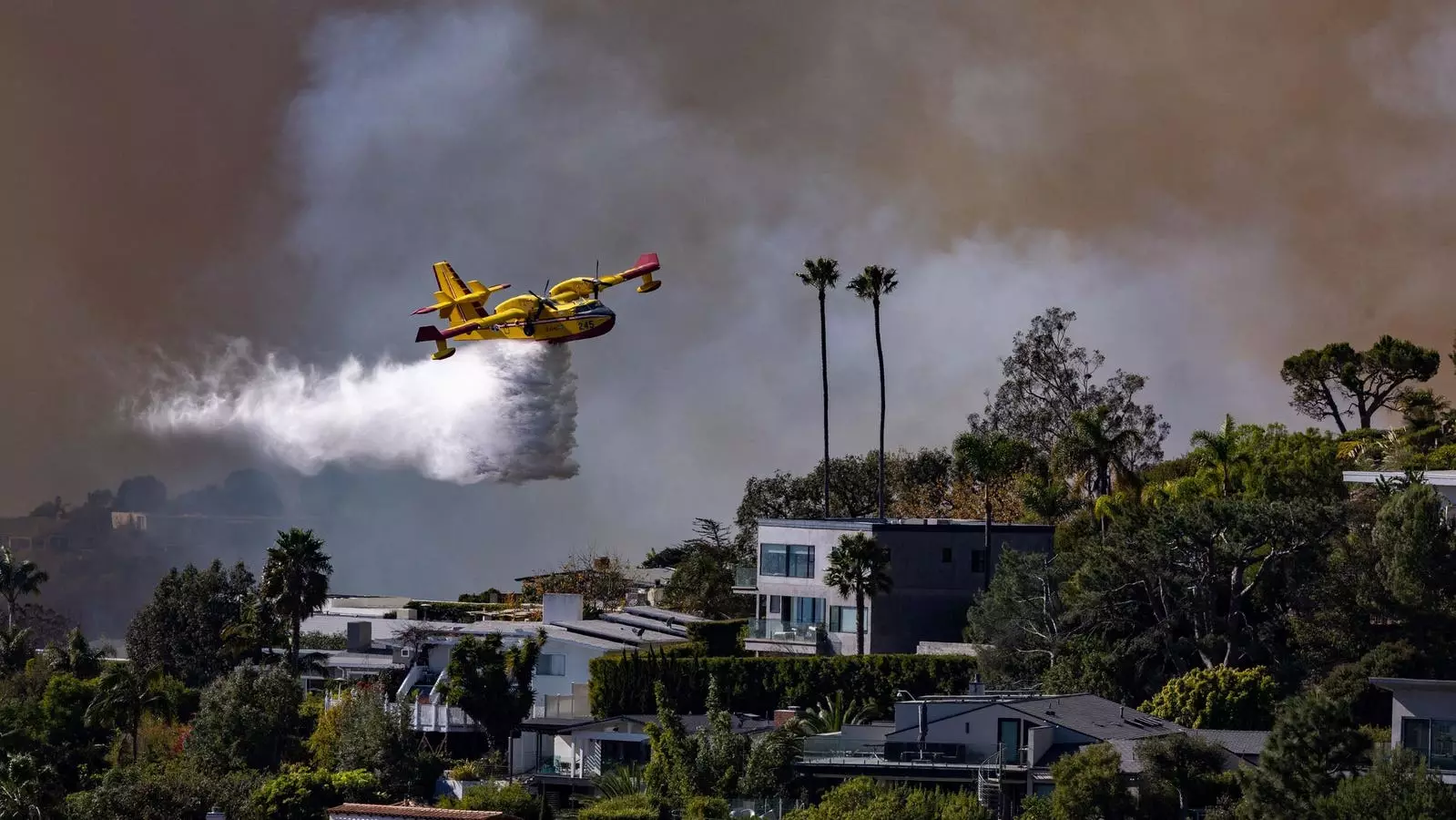In the wake of the devastating wildfires sweeping through the Los Angeles region, public discourse has spiked regarding the implications of climate change, water scarcity, and the role of influential figures like Stewart and Lynda Resnick of the Wonderful Company. These discussions have often miscast the Resnicks as the villains in a theater of chaos driven by water shortages. However, to place the blame on them oversimplifies a much more intricate situation rooted in California’s water management systems. As seen in various online discussions, these misconceptions can have significant repercussions, leading to an uninformed narrative that distracts from addressing the real challenges that arise from the state’s aging infrastructure and climate adaptation needs.
Contrary to the widespread belief that dwindling water resources contributed to the spread of these fires, reports confirm that the reservoirs in Los Angeles are, in fact, at capacity. The pipeline systems and firefighting infrastructure, however, remain the pivotal weaknesses in the emergency response network. Many experts emphasize that it is crucial to not only focus on the availability of water but also to ensure that the delivery mechanisms are fully functional and prepared for rapid deployment during emergencies. This failure to adapt to the evolving nature of climate change highlights a critical gap in public policy and emergency management.
The Unfolding Reality of Climate Adaptation
As climate change accelerates, the notion of adaptation has become far more pressing than simply aiming to mitigate its effects. Experts, including Dr. Mark Gold of the Natural Resources Defense Council, underscore the importance of recognizing climate whiplash in the context of wildfires and water management. The erratic weather patterns—ranging from extreme droughts to sudden downpours—create an immediate need for resilience-focused strategies that can withstand such volatility.
While initiatives for reducing greenhouse gas emissions are essential and commendable, they should not overshadow the equally critical requirement for developing adaptive measures to ensure safety and sustainability in the face of imminent threats. California’s evolving water security landscape, particularly in the wake of ferocious wildfires, demands innovative solutions that address these complexities holistically.
The escalating wildfires paint a sobering picture of California’s vulnerabilities, but they also provide an opportunity for a comprehensive review of existing policies. Many discussions surrounding water allocation and wildfire management often skate over the longstanding systemic issues that inhibit effective response. The focus should shift to implementing updated regulations and infrastructure improvements, fostering collaborations among public entities, private stakeholders, and community organizations. These coalitions can more effectively disseminate information, allocate resources, and mobilize response efforts during emergencies.
Moreover, innovative technologies and investments in sustainable resource management have immense potential to rejuvenate the ailing water infrastructure. From rainwater harvesting systems to smart water usage technologies, there exists a panorama of solutions that can significantly improve the status quo. The Wonderful Company’s recent pledge of $10 million for fire relief efforts is a positive step, yet it may also be a signal of a need for greater corporate responsibility towards systemic change.
Wider Implications and Lessons Learned
As the landscape of California continues to shift with increasing frequency and intensity, the importance of collective action becomes more pronounced. The discourse on water security, particularly in the context of natural disasters, should incorporate a broader view that encompasses not just the urban centers but also the rural communities that bear the brunt of ecological changes.
Furthermore, as the public grapples with the implications of climate change, there should be a robust effort to inform citizens accurately, helping them understand the intricacies of this evolving crisis rather than attributing unfounded blame to high-profile figures. Awareness can be a powerful tool in shaping community preparedness and resilience.
The wildfires ravaging Los Angeles are not merely a result of a water shortage but rather a litmus test of California’s broader emotional and physical readiness for climate adaptation. Addressing the rooted issues of infrastructure, public policy, and community engagement is paramount in navigating the turbulent waters of climate change and ensuring a more resilient future for all Californians.


Leave a Reply